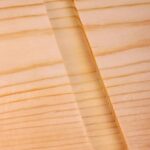Victorian woodwork is known for its intricate designs and timeless elegance, showcasing the craftsmanship of the era. The finish used on Victorian woodwork played a crucial role in not only enhancing its beauty but also ensuring its longevity. In this article, we will delve into the world of Victorian woodwork, exploring the various finishes used and how to choose the right one for your project.
The Victorian era, which spanned from 1837 to 1901, was characterized by ornate and elaborate designs in architecture and interior decor. This period saw a revival of Gothic and Rococo styles, resulting in richly detailed woodwork adorning homes and buildings. From intricate carvings to elaborate moldings, Victorian woodwork reflected the opulence and grandeur of the time.
Choosing the right finish for Victorian woodwork is essential to preserve its beauty and protect it from wear and tear. Traditional finishes such as shellac and varnish were commonly used during the Victorian era, while modern alternatives offer additional benefits such as durability and ease of application.
In this article, we will explore these traditional and modern finishes, along with factors to consider when making your selection. Whether you are restoring a historic home or simply appreciate the timeless charm of Victorian woodwork, understanding the importance of the right finish is key to maintaining its allure for years to come.
Understanding the Importance of Choosing the Right Finish for Victorian Woodwork
Victorian woodwork is known for its intricate designs and ornate details, making it a focal point in homes that feature this unique style. Choosing the right finish for Victorian woodwork is crucial in enhancing its beauty and ensuring its longevity. The proper finish not only protects the wood from wear and tear but also brings out the richness of its color and grain.
When considering what finish to use on Victorian woodwork, it’s important to understand the traditional finishes that were commonly used during the Victorian era. These include shellac, varnish, and lacquer. Each of these finishes has its own distinct properties and application techniques, so it’s essential to do thorough research and consider the specific characteristics of the woodwork being finished.
Additionally, modern alternatives to traditional finishes have become popular choices for Victorian woodwork in recent years. Polyurethane, acrylic, and oil-based finishes offer greater durability and easier application compared to their traditional counterparts. However, it’s important to weigh the benefits of modern finishes against the authenticity they might compromise in achieving an accurate historical look.
Factors such as exposure to sunlight, humidity levels, and desired sheen should also be taken into consideration when choosing a finish for Victorian woodwork. It’s essential to evaluate these factors in order to select a finish that will not only enhance the appearance of the woodwork but also provide adequate protection against environmental elements.
Traditional Finishes Used in Victorian Woodwork
Victorian woodwork is known for its intricate carvings, ornate details, and rich wood stains, making it a timeless feature of homes from that era. Whether you are restoring original Victorian woodwork or simply want to replicate the look in a modern setting, choosing the right finish is crucial in achieving an authentic and lasting result.
Traditional finishes used in Victorian woodwork include:
- Shellac: This natural resin-based finish was commonly used in the Victorian era for its warm color and glossy sheen.
- Varnish: A durable and long-lasting option, varnish enhances the natural grain of the wood while providing a protective layer.
- Wax: While not as common as shellac or varnish, wax was occasionally used to achieve a soft sheen on Victorian woodwork.
Each of these traditional finishes has its own unique characteristics that contribute to the overall aesthetic of Victorian woodwork. Shellac provides a warm glow, while varnish offers durability and protection. Understanding the properties of each finish is essential in deciding what finish to use for your Victorian woodwork project.
When deciding what finish used Victorian woodwork, it’s important to consider factors such as:
- The type of wood you are working with
- The desired level of sheen and color
- The amount of maintenance you’re willing to commit to
By understanding these factors and exploring traditional finishes such as shellac and varnish, you can make an informed decision that will enhance the beauty and longevity of your Victorian woodwork.
Modern Alternatives to Traditional Finishes for Victorian Woodwork
In recent years, there has been a growing interest in finding modern alternatives to the traditional finishes used in Victorian woodwork. Many homeowners and restoration enthusiasts are looking for ways to achieve the classic look of Victorian woodwork while benefiting from the advancements in finish technology.
One popular modern alternative to traditional finishes for Victorian woodwork is polyurethane. This durable and long-lasting finish provides a glossy sheen that enhances the natural beauty of wood while offering excellent protection against moisture and wear. Additionally, polyurethane is available in both oil-based and water-based formulations, making it suitable for various preferences and requirements.
Another modern alternative gaining popularity is acrylic lacquer. This quick-drying finish offers a clear and glossy appearance that mimics the look of traditional shellac or varnish. Acrylic lacquer also provides good durability and resistance to scratches, making it an attractive option for those looking to maintain the authentic charm of Victorian woodwork with a more user-friendly application process.
Homeowners and restoration professionals alike are increasingly turning to these modern alternatives as they offer the perfect combination of classic aesthetics and contemporary practicality. By considering factors such as durability, ease of application, and desired sheen level, individuals can make informed decisions on which modern finish alternative best suits their Victorian woodwork project needs.
Factors to Consider When Choosing a Finish for Victorian Woodwork
When it comes to choosing the right finish for Victorian woodwork, there are several important factors to take into consideration. One of the key considerations is the historical authenticity of the finish.
Many homeowners and restoration specialists aim to maintain the original look and feel of Victorian-era woodwork, so using a finish that would have been traditionally used during that time period is essential. Additionally, considering the type of wood being finished is crucial, as different types of wood may respond differently to certain finishes.
Another important factor to consider when choosing a finish for Victorian woodwork is the desired level of sheen and luster. Traditional finishes such as shellac and varnish can provide a rich, glossy appearance, while modern alternatives like polyurethane may offer a more contemporary look. The aesthetic goals of the project should be carefully considered when selecting a finish in order to achieve the desired visual impact.
In addition to historical authenticity and aesthetic preferences, practical considerations such as durability and ease of maintenance should also be taken into account. Some finishes may offer better protection against wear and tear, making them more suitable for high-traffic areas or pieces of furniture. Furthermore, understanding the application process and required maintenance for each type of finish is crucial in ensuring that it will meet the specific needs of the Victorian woodwork being treated.
| Factors to Consider | Considerations |
|---|---|
| Historical Authenticity | Important to maintain original look |
| Level of Sheen and Luster | Aesthetic goals must be considered |
| Durability and Maintenance | Protection against wear and tear |
Step-by-Step Guide on How to Apply the Chosen Finish to Victorian Woodwork
The process of applying the right finish to Victorian woodwork is crucial in order to preserve its beauty and ensure its longevity. Whether you are restoring original Victorian woodwork or replicating the style in a new construction, the finish used plays a key role in achieving an authentic and polished look.
One traditional finish commonly used on Victorian woodwork is shellac. This natural resin-based finish provides a warm, rich color and has been a popular choice for centuries. Another traditional option is varnish, which offers a glossy and durable finish that can enhance the natural beauty of the wood. Both shellac and varnish require careful application to achieve the desired result.
In modern times, there are also alternative finishes available for Victorian woodwork. Polyurethane, for example, is a hard-wearing synthetic finish that provides excellent protection against moisture, heat, and chemicals. This makes it a popular choice for high-traffic areas or pieces of woodwork that are regularly handled. Other modern alternatives include acrylic finishes, which offer a clear and water-resistant coating without the yellowing effect that can occur with some traditional finishes.
| Traditional Finishes | Modern Alternatives |
|---|---|
| Shellac | Polyurethane |
| Varnish | Acrylic Finishes |
Maintenance Tips for Preserving the Finish on Victorian Woodwork
Preserving the finish on Victorian woodwork is crucial for maintaining the beauty and integrity of these timeless pieces. Whether it’s intricate trim, elaborate staircases, or ornate furniture, taking proper care of the finish will ensure that the woodwork lasts for many more years to come. Here are some maintenance tips for preserving the finish on Victorian woodwork.
Regular Dusting and Cleaning
One of the simplest yet most effective ways to preserve the finish on Victorian woodwork is regular dusting and cleaning. Use a soft cloth or duster to gently remove dust and dirt from the surface of the woodwork. Avoid using abrasive cleaners or harsh chemicals, as they can damage the finish.
Protecting Against Moisture
Moisture can be detrimental to the finish on Victorian woodwork, causing it to warp or discolor over time. To prevent this, make sure to keep the woodwork in a dry environment and avoid placing items like wet towels or flower vases directly onto the surface. In case of spills, immediately wipe them up with a dry cloth to prevent any moisture from seeping into the finish.
Periodic Maintenance and Refinishing
Over time, even with proper care, the finish on Victorian woodwork may start to show signs of wear and tear. In such cases, periodic maintenance and refinishing may be necessary to restore its original luster. This can involve applying a fresh coat of varnish or shellac, or even completely stripping and reapplying the finish if needed. Regularly inspecting the woodwork for any damage or deterioration can help address any issues before they become more serious.
By following these maintenance tips, you can ensure that the finish on your Victorian woodwork remains beautiful and well-preserved for years to come.
Case Studies
Restoring Victorian Woodwork in a Historic Home
In a historic home in the heart of downtown, the owners were determined to restore the original Victorian woodwork to its former glory. The woodwork had been hidden under layers of paint for decades, but after careful restoration and stripping, the intricate details of the woodwork were revealed.
To achieve an authentic look, the restoration team opted for a traditional finish using shellac. This choice was made not only for its historical accuracy but also for its ability to bring out the richness and depth of the wood grain.
Reviving Victorian Charm in a Modern Setting
In a newly constructed home designed to replicate the style of a Victorian-era mansion, the challenge was to ensure that the woodwork had an authentic period finish while still being durable enough to withstand modern living. After extensive research, the design team decided to use a combination of varnish and wax as the finishing coat. The varnish provided durability and protection, while the wax added a warm patina that enhanced the vintage appeal of the woodwork.
Preserving Timeless Elegance in a Historic Landmark
A historic landmark known for its impeccably preserved Victorian interiors faced the task of preserving its original woodwork while making it more resistant to wear and tear from heavy foot traffic. The solution came in the form of modern polyurethane finishes with low VOC content.
This allowed for minimal disruption to the integrity of the original wood while providing a long-lasting protective layer against scratches and fading. The result was Victorian woodwork that retained its timeless elegance while being able to withstand continuous use.
These case studies demonstrate that there are various techniques used in achieving beautifully finished Victorian woodwork, each tailored to suit specific requirements such as historical accuracy, durability, or preservation. Regardless of whether traditional or modern finishes are chosen, it is crucial to consider both aesthetic appeal and practicality when deciding on the most suitable finish for Victorian woodwork.
Conclusion
In conclusion, the choice of finish for Victorian woodwork is crucial in enhancing not only its beauty but also its longevity. Traditional finishes such as shellac and varnish have been used for centuries to bring out the unique characteristics of this style of woodwork, while modern alternatives offer convenience and sustainability. It is important to consider factors such as the type of wood, desired sheen, and level of durability when choosing a finish for Victorian woodwork.
Furthermore, applying the chosen finish requires attention to detail and proper technique to achieve the desired look. Whether it’s a high-gloss finish or a more natural matte look, following a step-by-step guide can ensure that the Victorian woodwork is properly treated and preserved. Additionally, maintenance tips play a vital role in retaining the finish on Victorian woodwork, from regular cleaning to periodic reapplication of protective coatings.
Ultimately, as demonstrated by the case studies of beautifully finished Victorian woodwork, the right finish can truly bring out the intricate details and craftsmanship of this era. It not only adds value to the property but also creates a timeless aesthetic that can be appreciated for generations to come. Therefore, choosing the right finish for Victorian woodwork is an essential consideration for homeowners and restoration specialists alike.
Frequently Asked Questions
What Kind of Wood Was Used in the Victorian Houses?
Victorian houses often used a variety of woods for different purposes. Common woods used in Victorian houses included oak, mahogany, pine, and walnut. These woods were often chosen for their durability, aesthetic appeal, and ability to be intricately carved or turned.
Did Victorians Paint Woodwork?
Yes, Victorians did paint woodwork in their houses. While some homeowners appreciated the natural beauty of wood and chose to leave it unpainted, many others opted to paint the woodwork in their homes. It was common to see intricate moldings, trim, and even furniture painted in rich colors to showcase the Victorian aesthetic.
What Is the Best Wood for Victorian Furniture?
The best wood for Victorian furniture was often considered to be mahogany due to its strength, fine grain, and rich color. Mahogany was popular for creating ornate pieces with detailed carvings and intricate designs typical of the Victorian era. However, oak and walnut were also commonly used for their durability and attractive appearance in Victorian furniture manufacturing.

Hi everyone! I’m a woodworker and blogger, and this is my woodworking blog. In my blog, I share tips and tricks for woodworkers of all skill levels, as well as project ideas that you can try yourself.





